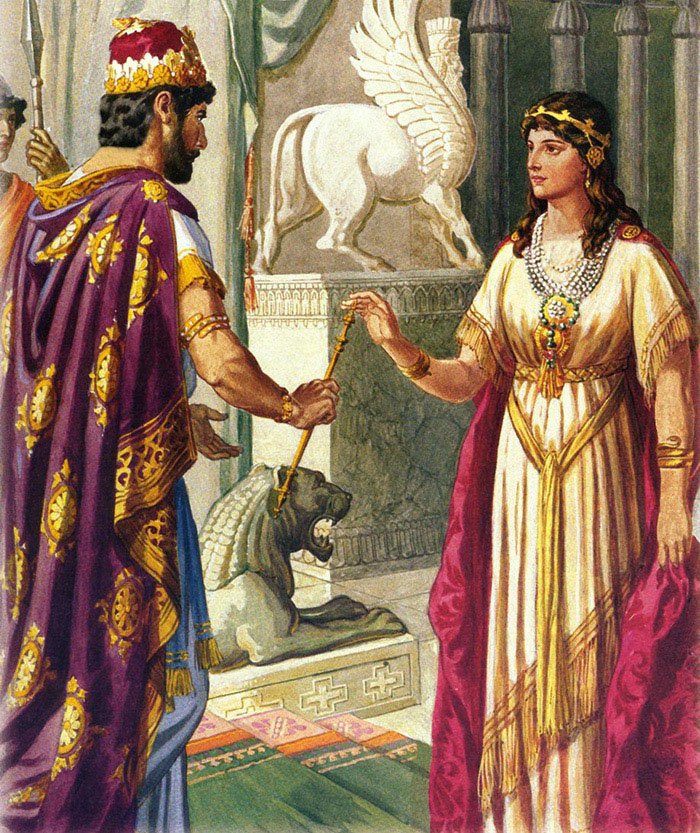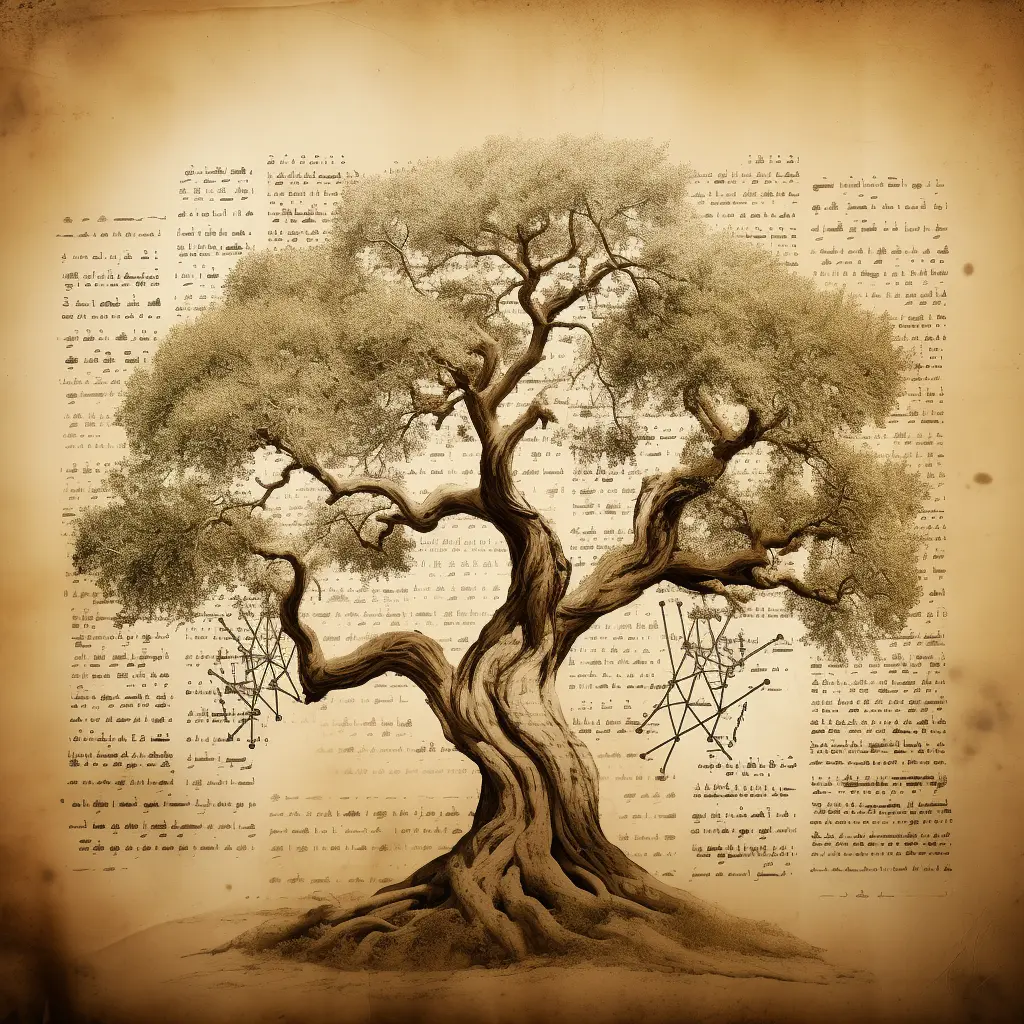
Queen Esther, renowned for her beauty and courage, was the Jewish queen of the Persian king Xerxes. Esther’s extraordinary tale is chronicled in the Old Testament book bearing her name. Her story showcases her rise from a simple Jewish maiden to becoming the queen of one of the most powerful empires of the time. A heroine in the annals of Jewish history, she famously used her influence to prevent the genocide of her people. Esther’s life after Xerxes’ death is shrouded in mystery, with numerous theories suggesting various outcomes. Her life and deeds are celebrated yearly during the Jewish festival of Purim.
Recap of King Xerxes
In the Persian Empire’s heart, King Xerxes held the rein, known for his grandeur and immense power. His reign, spanning from 486-465 BC, was marked by major military campaigns and iconic architectural contributions. A significant figure during this era was Queen Esther, often remembered for her beauty and courage.
Historical Context of Queen Esther and King Xerxes
Life of Queen Esther as King Xerxes’s Wife
Famed for her charm and bravery, Queen Esther held a paramount role after she married King Xerxes. Being a Jewish orphan named Hadassah, who, due to circumstances, found herself at the helm of the Persian Empire as queen, her life irrefutably transformed. As Xerxes’ wife, she not only represented female empowerment but her unyielding strength to save her people from a strategic genocide is legendary.
In an era replete with conspiracies, she maneuvered through the complexities of court life while endeavoring to maintain her Jewish faith. Despite the historical texts being silent on her life post-Xerxes’ death, experts suggest she may have had an intense journey. Nevertheless, her courageous acts during the reign signified not just survival but also the assertion of her values. Thus, understanding Esther’s tenure as Xerxes’s wife is crucial to uncovering her life following the king’s demise, despite the lack of direct references.
Interesting read: “Egypt’s 10 Most Famous Pharaohs.”
King Xerxes’s Reign and Death
The narrative of King Xerxes and Queen Esther takes place within an intricate framework of Persian history. Xerxes, known as the high king of Persian Empire, ruled with an iron fist from 486 BC until his assassination in 465 BC. He is best remembered for his massive invasions of Greece, which underpinned his reputation for ruthlessness and ambition. His demise was the result of a complex web of court intrigues, culminating in a conspiracy led by Artabanus, a trusted royal bodyguard.
The sudden death of Xerxes abruptly changed the political landscape, leaving a power vacuum in the heart of the Persian Empire. This historical period marked a significant turning point, adding a new chapter in the life of Queen Esther. Her story, a tale of courage and faith, continues to unravel even after Xerxes’ sudden disappearance, illustrating her strength in navigating through times of political uncertainty.
Theories on Esther’s Life after Xerxes’s Death
Continuing as Queen Mother
In the wake of King Xerxes’s death, various theories have arisen about Queen Esther’s life. Among these suppositions, the most accepted is her life as the ‘Queen Mother’. Historical records and biblical accounts do not provide a direct narrative of her life post-Xerxes’s demise, hence, everything is based on premises and conjectures. The theory of her continuing as Queen Mother arises from the understanding of ancient Persian royal norms.
The Queen Mother was often a significant figure, wielding influence in political matters. As the mother of King Artaxerxes I, who took over after Xerxes’ death, it’s likely that Esther held a position of considerable prestige and influence, maintaining her involvement in the court’s affairs. This role might have provided her the opportunity to safeguard the interests of her Jewish people in the empire, persisting in her stand for justice and advocacy much as she did during her reign as Queen.
The Theory of Forced Ascetic Life
Speculation leads to one theory suggesting Queen Esther may have been compelled to live a life of asceticism after King Xerxes’s demise. This implies she led a life devoid of materialistic pleasures or indulgences, adopting minimalism and perhaps even solitude.
There’s a possible religious aspect to this theory too, considering Judaism’s teachings value modesty and restraint. The exact reasons for this forced ascetic life are unclear. They could range from political instability post Xerxes’s death, Esther’s personal safety concerns, or her spiritual awakening. Nonetheless, it portrays a life of austere simplicity following the turbulent reign and eventual death of King Xerxes.
Speculations of Possible Exile
There are numerous theories and speculations about Queen Esther’s life following the demise of King Xerxes I. One such assumption suggests that she was possibly exiled. This conjecture stems from historical accounts which indicate that royal queens often faced uncertain futures when their reigning king died. Without the protection of Xerxes, her status would have been in jeopardy, with possiblity of her being expelled out of the court.
Adding to that, Xerxes’ son, Artaxerxes I, had his own wife and queen, implying pehaps that there was no place for Esther in the royal palace. Furthermore, there have been limited historical materials referencing about Esther post Xerxes’s reign. However, it is important to take into account that these are merely educated assumptions, shaped by the political situations of the time and lack of concrete historical evidence on Queen Esther’s fate post Xerxes’s death.
References in Religious Texts
Mention of Esther in The Old Testament
The Old Testament provides valuable insights into Queen Esther’s life but provides little information about her life after King Xerxes’ demise. According to Jewish tradition, Esther, an orphan raised by her cousin Mordecai, acceded to Persian royalty and averted potential genocide of the Jews during her reign. Her contribution is celebrated in the Feast of Purim.
However, any specifics regarding her later existence remain shrouded in mystery. Despite multiple exegetical interpretations, the canonical books do not explicitly address the events or circumstances leading to Esther’s ultimate fate. Thus, her life following Xerxes’ death remains an intriguing, unsolved enigma in biblical literature.
References in Talmudic Literature
In Talmudic literature, there are a few but formidable references to Queen Esther’s life post-King Xerxes’s death. Several interpretations present her as a symbol of Jewish resilience, managing to survive and maintain her faith despite the challenges she faced as a queen in a foreign land after Xerxes’ era. Megillah 15a, a Talmud tractate, mentions a significant shift in Queen Esther’s religious practice once Xerxes passed away.
Being free from her marriage to a non-Jewish king, it states that she returned to observing Jewish laws and customs more stringently. This display of faithfulness, the literature suggests, further consolidated her standing as a pivotal figure in Jewish history. Interestingly, the Talmud also infers the possibility of her having a role in the biblical assembly that collected and canonized the Hebrew Bible in Megillah 7a. Overall, through these suggestive narratives, Talmudic literature appreciates Queen Esther’s significance beyond Xerxes’s reign.
Queen Esther’s Legacy
Influence on Jewish Culture and History
In the aftermath of Xerxes’ death, Queen Esther’s influence on Jewish culture and history became more palpable. Her story is celebrated with the annual Jewish festival of Purim, which commemorates the salvation of the Jewish people in ancient Persia from the plotted annihilation as depicted in the Book of Esther. Furthermore, she represents courage and wisdom—virtues deeply honored in Jewish tradition. She serves as a beacon of hope for many in the Jewish community, particularly during times of adversity.
She is seen as a symbol of resilience, strength, and unflagging faith in God. Esther’s tale has penetrated every facet of Jewish culture, from literature to the visual arts, and her heroic deeds are often referred to during challenging times, offering inspiration and unity to the Jewish community. Despite the mystery surrounding Queen Esther’s life following Xerxes’ death, her enduring legacy continues to impact Jewish history and culture significantly.
Modern Interpretations of Queen Esther
Although historical records lack a detailed account of Queen Esther’s life post-King Xerxes’ death, various contemporary scholars and writers have filled this void with imaginative interpretations. Inspired by her bold character and intriguing story, modern-day narratives often portray her as a timeless heroine, a symbol of courage and grace. For instance, a popular interpretation suggests Esther’s rise to a prominent political role, highlighting her intelligence and diplomatic skills in the wake of Xerxes’ death.
Another widespread portrayal is her assumed transformation into a prominent religious figure, proclaiming Judaism in Persia. In today’s society, she is commemorated during the Jewish festival of Purim, celebrating her bravery in saving the Jewish people. While these interpretations may differ, they all acknowledge her significant impact and her lasting legacy, cementing her place in both history and mythology.
Conclusion
Recap and Reflection on Queen Esther’s Post-Xerxes Life
Reviewing the historical tapestry, we witness Queen Esther’s trajectory substantially veering following Xerxes’ demise. Ensconced in the annals of Jewish history for her bravery and influence, Esther’s post-Xerxes chapter remains shrouded in uncertainty due to scarce records. However, the reverence and admiration she continues to command in Jewish culture and beyond, particularly through the celebration of Purim, attests to her enduring legacy.
Many speculate she continued to navigate her role tactfully, safeguarding Jewish interests until her last breath. Despite the lack of specifics, Esther’s life reflects unwavering courage and resilience and is a reminder of the power of influential women in historical narratives.



